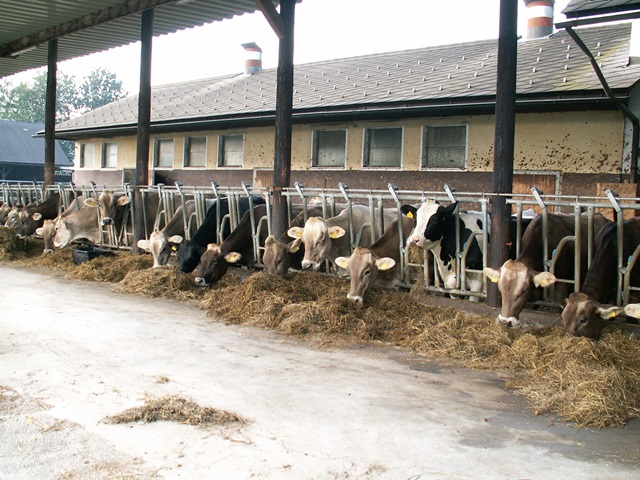Detailed information on the Swiss studies can be found in Hofstetter et al. (2011, 402ff), Wyss et al. (2011, 412ff) and Gazzarin et al. (2011a, 418ff). In a free cooperation project, the data from the Swiss studies on economic evaluation under Austrian conditions were made available by the Swiss cooperation partners.
Summary
Full-pasture farming is becoming increasingly important in Central Europe - more and more companies are showing interest in this farming strategy. However, it is still unclear for many companies whether this form of husbandry represents a profitable alternative for small-scale agriculture in the mountain areas of the Alpine region. This question was examined in the present work. It was also considered whether conventional or organic farming leads to better results, how changing market conditions affect the results and to what extent the results of this work differ from Swiss studies.
The results of the Swiss experiment “Hohenrain System Comparison” served as the starting point for the calculations. In an experiment, the milk production systems of stable and full-grazing farming were tested under the same conditions (management, farm size). The typical Austrian market environment was economically evaluated. The model farms were differentiated into conventional and organic farming methods and, with 25 hectares of agricultural land and a number of dairy cows of 24 to 28, reflected a dairy farm that was typical for Austria. In addition, the variants of intensification of milk production with stable farming and conversion to hay milk production were included
The results of this work and further studies from Austria, Switzerland and Germany show the great economic potential of full-pasture farming
. In the present work, this strategy achieved significantly higher income from dairy farming, higher labor income and imputed operating profit. A more restrictive use of concentrate feed and inputs leads to lower direct costs, which means that loss of income can be offset by lower milk production. Additional income, such as the sale of cows and calves for slaughter, became more important, meaning that the farms were less dependent on milk sales. A fall in milk prices would therefore have less negative impact. Organic, full-grazing farms achieved particularly good results. The organic stable farms also achieved better results than the conventional model farms. Marketing programs such as hay milk can also be interesting for pasture-raised farms. When comparing Austria and Switzerland, the significantly higher cost and revenue structure in Switzerland is obvious. In summary, full pasture farming represents an interesting alternative to conventional stable farming for Austrian and Swiss dairy farms. Due to rising concentrate and input prices, the economic advantage of full pasture farming could increase even further in the future.
You can request the complete final report via the following email address:






